2019 MLB Season: Rating the NL East GMs

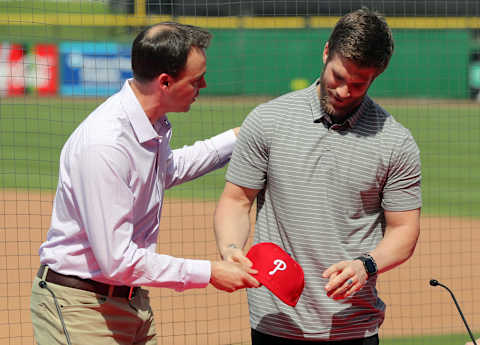
From best to worst, evaluating the performances of the five general managers running NL East teams for the 2019 MLB season.
Since assuming control of the Atlanta Braves from the disgraced Coppolella regime prior to the 2018 season, Alex Anthopoulos has worked almost flawlessly to lift the club into contending status. His performance in preparation for the 2019 MLB season is an extension of that record.
Based on mid-season data, Anthopoulos’ decisions have improved the 2019 Braves by 7.9 games. That’s easily the best performance by any National League general manager, and a half dozen games better than any other NL East general manager.
This is the fifth of a series of six articles through the All-Star break looking at the impacts of general manager moves. Teams will be analyzed on a division-by-division basis. WAA is the preferred method of assessment because it possesses all the statistical advantages of WAR while being pegged to the average performance of a current major league player rather than to a replacement player. That means an average score is, quite conveniently, 0.0.
Because teams are judged only on the basis of moves made since the end of the previous season, the assessment won’t necessarily mirror the standings. Some teams are populated principally by players contractually obligated to the team since before the end of 2018, meaning their performances do not figure into this rating.
All we are interested in here is the impact of personnel decisions made since the end of the 2018 season. Still, those decisions could take several forms: acquiring a player by trade or sale, trading or selling a player, signing a free agent, extending a player already on your team to a new contract carrying into his normal free agent years, or allowing a player to leave via free agency.
Use of players who retain rookie status also counts.
From best to worst, here’s how the GMs of the five NL East teams have done during the 2019 MLB season.
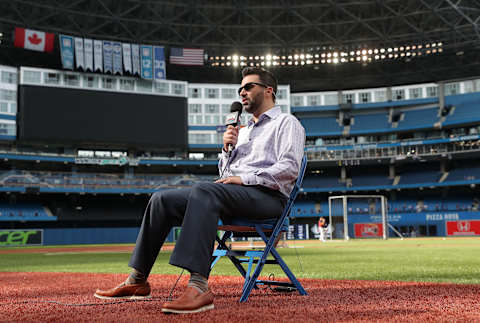
2019 MLB Season: Rating the NL East General Managers
1. Alex Anthopoulos, Atlanta Braves, +7.7
Anthopoulos is one of only three general managers with positive ratings in all three categories measuring player arrivals: trades, free agent signings and callups…and his numbers are also the most consistent. He has improved the team by 2.8 WAA via his acquisitions, by 3.3 WAA through free agency, and by 1.1 WAA from the farm system.
The signing of free agent Josh Donaldson, which was no certain winner, stands out. Donaldson has produced 16 home runs, an .844 OPS and a 1.1 WAA. An eight-year extension for Ronald Acuna Jr., began paying off with his .292 average, 20 home runs, .879 OPS and 1.8 WAA.
Mike Soroka came up from the minors and has delivered a 9-1 record and 2.13 ERA for a +2.3 WAA. Max Fried, another rookie, has a 9-3 record in 17 starts and is closing in on +1.0 WAA.
The deal that brought Anthony Swarzak over from Seattle was subtle, but Swarzak has produced a 0.52 ERA in 17 appearances and a +0.8 WAA.
From start to finish, that’s the kind of season it has been for Anthopoulos. He has made 23 roster moves, two-thirds of which have netted positive WAA for the Braves to date. Other GMs can only dream about that kind of success rate…and it is only beginning to encompass the impact of Dallas Keuchel’s late-June signing. So there’s actually room for improvement.
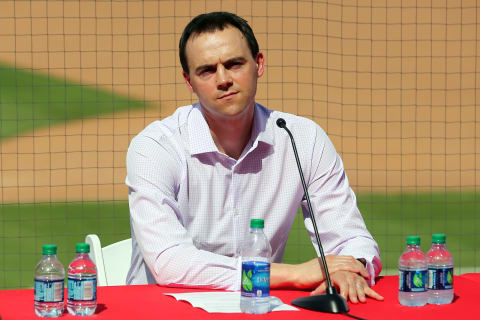
2019 MLB Season: Rating the NL East General Managers
2. Matt Klentak, Philadelphia Phillies, +1.7
Shouldn’t the general manager who dominated the winter headlines, who had stupid money to play with, and who used a lot of it to tie up Bryce Harper for life, be expected to produce at least a couple games of positive short-term impact?
Some of what Klentak did this past winter has worked out well. He leveraged Miami into coughing up J.T. Realmuto, who has produced .270 average, 10 home runs, steadied the catching picture and yielded a +1.5 WAA.
The trade for shortstop Jean Segura, .272 with 38 RBI and an +0.5 WAA, is a plausible credit. Re-signing Aaron Nola to a four-year deal reaped immediate dividends when Nola started 7-2, good for a +1.3 WAA.
And signing free agent Andrew McCutchen was a plus until McCutchen tore up his knee.
The Harper signing is the obvious short-coming, at least based on the short-term return on investment. For the first half of his $11.54 million 2019 salary, Harper has generated a .248 average and 16 home runs, translating to a -0.3 WAA. Since those actually aren’t far from Harper’s career .276 average and 32 home runs over a full season, the most accurate conclusion may be that the outfielder has a superb agent.
Aside from lack of value from Harper, Klentak’s problems lay in his rookie class. Ten first-year players have put in time in Philadelphia, and their combined impact has amounted to -1.6 WAA. None have produced a positive impact greater than +0.1 WAA.

2019 MLB Season: Rating the NL East General Managers
3. Mike Rizzo, Washington Nationals, -0.6
In an effort to gird the Nationals against Harper’s departure, Mike Rizzo gambled in the trade market this winter. If first-half returns are a fair indication, he lost those gambles.
Rizzo acquired three players in deals with other teams: Yan Gomes, Javy Guerra and Tanner Rainey. None has produced positive value for the Nationals. The trio cost Washington the services of four other players: Jimmy Cordero, Tanner Roark, Austin Adams and Trevor Gott. The combined impact of those four on their new teams has been +2.1 WAA.
The trade of Roark to Cincinnati has been particularly painful. Roark has a 3.51 ERA and a 1.4 WAA for the Reds. Rainey, who they got for Roark, is 1-3 with a 5.29 ERA in 19 relief appearances.
The net impact on Washington amounts to -2.6 WAA, a number that goes a long way toward explaining why Rizzo’s team sits in third place in the NL East.
The returns on a touted Nationals rookie class are, to date, mixed. Carter Kieboom, a presumed star in the making at middle infield, batted .128 in 43 plate appearances and was returned to Triple A. On the other hand, Victor Robles appears to be making an impression in his third crack at cementing a roster spot. Robles is only batting .242, but his WAA to date is +0.2, which happens to be a half game better than the guy he replaced, Harper.
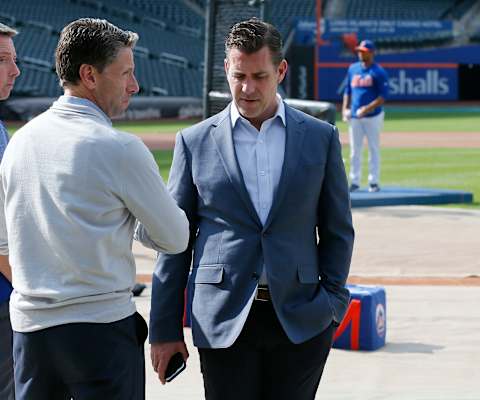
2019 MLB Season: Rating the NL East General Managers
4. Brody Van Wagenen, New York Mets, -1.4
Van Wagenen was the sexy GM hire the Mets made to stir things up over the winter. He has accomplished the stirring, trading for, signing, re-signing or promoting 25 faces to the Mets roster while relieving the club of seven others who caught on with different teams.
This, however, is another case where the overnight analysts confused movement for progress. Only 10 of those 32 moves actually improved the Mets.
There is good news. Van Wagenen’s promotion of Pete Alonso to the big club was, however obvious a move, a solid one. Alonso’s impressive start. A.278 average, 28 home runs, 64 RBIs and a .995 OPS, translates to a +2.6 WAA.
The general manager also gets credit for re-signing his former client, Jacob deGrom, to a new five-year deal. DeGrom returned the favor with a 3.32 ERA in 17 starts despite continuing to pitch in a run-starved environment, as his 4-7 record suggests. He has produced a +2.0 WAA.
Given those two pluses, however, ponder how bad the rest of Van Wagenen’s moves must have been to yield an overall -1.4 rating. Here’s how bad:
- Aside from DeGrom and Alonso, the most productive Van Wagenen product has been reliever Seth Lugo, +0.1 WAA.
- His big catch, closer Edwin Diaz, is 1-5 with a 4.64 ERA and a -0.1 WAA.
- His other big catch, infielder Robinson Cano, is batting .239 with four homers, a .654 OPS and a -1.5 WAA.
- Five players brought in by Van Wagenen — Cano, Keon Broxton, J. D. Davis, Jeurys Familia and Luis Avilan, have each cost the Mets -0.5 WAA or worse.
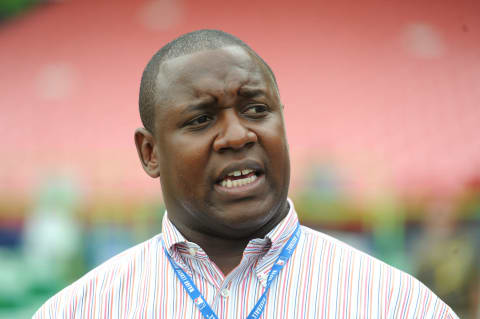
2019 MLB Season: Rating the NL East General Managers
5. Mike Hill, Miami Marlins, -4.2
The Marlins have been so bad for so long under Hill’s oversight that it’s hard to gauge whether his rating reflects budget-driven restrictions or simple lack of ability. He ranked last in all of baseball among general managers for short term improvement last season, last in the National League in 2017, and thus far this year he ranks ahead of only Colorado’s Jeff Bridich.
More from Call to the Pen
- Philadelphia Phillies, ready for a stretch run, bomb St. Louis Cardinals
- Philadelphia Phillies: The 4 players on the franchise’s Mount Rushmore
- Boston Red Sox fans should be upset over Mookie Betts’ comment
- Analyzing the Boston Red Sox trade for Dave Henderson and Spike Owen
- 2023 MLB postseason likely to have a strange look without Yankees, Red Sox, Cardinals
Spanning two tenures, this is Hill’s 10th season as Miami general manager. He has ranked 14th or lower among NL GMs in four of those seasons, 10th or lower in seven of them.
So his 2019 rating is true to form.
Given budget limitations, Hill has been forced to work around the margins of baseball’s talent pool. That explains the free agent contract given to an aging Curtis Granderson (.188, 7 homers, .630 OPS. Granderson has returned a -1.2 WAA. Fellow veteran signees Neil Walker and Sergio Romo are both also in negative WAA territory.
Hill acquired outfielder Rosell Herrera on a waiver claim from the Royals, but Herrera has managed just a .200 average in 119 plate appearances.
How about building from within? In 2019, that effort has focused on the pitching staff. Of the six rookies Hill has tried five are pitchers, and to date, Jordan Yamamoto has been the pick of the litter. In four starts since being called up in early June, Yamamoto has a 2.35 ERA, good for a +0.7 WAA.
As a group, though, those six rookies have produced a mildly negative -0.7 WAA.
On a rebuilding team, which the Marlins perennially are, the telltale signs often aren’t the most recent acquisitions, but the young core, much of which is likely to be already in place. For Miami, that core consists of players such as Brian Anderson, Sandy Alcantara, Trevor Richards, Caleb Smith, Miguel Rojas, and Garrett Cooper.
Next. Yankees: The 'Martian' Has Prepared For Liftoff. dark
All six of the above-named players are holdovers, so none of them influences Hill’s 2019 rating. But for the record, their cumulative impact on Miami’s 2019 performance has been +4.9 WAA. So perhaps there’s a reason for hope.